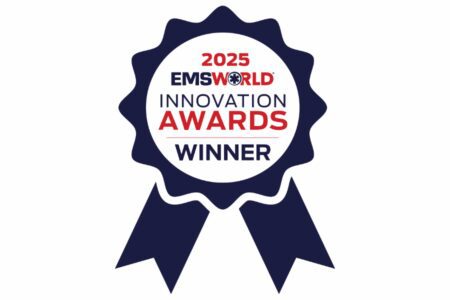EMR interoperability holds enormous promise for EMS and hospital teams alike. But many agencies hesitate to move forward—unsure how to align systems, workflows, or stakeholder roles. Some fear technical complexity. Others struggle to prioritize interoperability amid competing initiatives. But in today’s data-driven, value-based care environment, standing still is no longer an option. The agencies that act now are not just solving technical issues but shaping the future of connected care.
But the need to act isn’t just strategic—it’s urgent.
EMS and hospital systems are under increasing pressure: rising call volumes, workforce shortages, value-based care mandates, and escalating demand for real-time data. At the same time, advancements in health IT—from national EHR networks to AI-powered analytics—are raising the bar for what connected care can and should look like. Interoperability is quickly shifting from a competitive advantage to a baseline expectation.
Hospitals and EMS agencies that fail to integrate now risk falling behind—operationally, financially, and clinically. Missed connections lead to missed insights, which can mean slower decisions, higher risk, reduced credibility with partners, and a lower standard of patient care. In an era defined by data, siloed systems aren’t just inefficient; they’re unsustainable.
In part one of this report series, we covered the core concepts of EMR interoperability, clarified key terms like EMR, EHR, and ePCR, and explained why it matters for EMS and hospital teams. In part two, let’s explore what it actually takes to implement EMR interoperability in the real world. From team alignment to data standards, this is about moving from understanding the concept to making it work across your EMS and hospital systems.
EMS-Hospital Interoperability Is a Team Sport
No matter how advanced the software is, interoperability doesn’t succeed without coordination between people. It requires active collaboration between EMS agencies, hospital administrators, clinical leaders, and IT teams—often across multiple organizations. One of the biggest mistakes agencies make is assuming that technology alone can bridge the gap. In reality, successful EMR interoperability is rooted in shared expectations, defined workflows, and ongoing governance.
EMS leaders need to understand how ePCR data integrates into hospital workflows. Hospitals must prepare their systems to receive structured EMS data—not just as a PDF, but as clinical input their teams can act on. And both sides must be aligned on what data matters most, how it’s accessed, and who is responsible for monitoring and improving the connection over time.
Building an EMR Interoperability Foundation: Standards and Structure
One of the primary enablers of EMR interoperability is structured, standards-based data exchange. This ensures that EMS systems can talk to hospital EMRs and EHRs in a way that’s predictable, secure, and clinically meaningful. ImageTrend’s Health Information Hub (HIH), for example, uses HL7, CDA, and FHIR standards to make EMS data interoperable with hospital records systems like Epic and Oracle Health.
Equally important is the use of structured ePCR documentation. EMS providers play a pivotal role here: clean, accurate, and timely documentation ensures that hospital systems can properly ingest field data. Agencies should train crews on the importance of data entry consistency—especially in demographic fields—and how those records are used downstream to inform hospital workflows and clinical decisions.
Aligning EMS-Hospital Interoperability Workflows and Expectations
Even with the right systems and standards in place, operational alignment is critical. EMS data needs to arrive at the hospital in real time—or close to it—to influence care. That means ensuring the ePCR is completed and transmitted at the right moment, often during or immediately after patient handoff. Hospitals must have protocols in place to surface that data in their EMRs so care teams can access it alongside in-house vitals, labs, and imaging.
This handoff isn’t just technical; it’s cultural. EMS and ED staff need a shared understanding of what data is being exchanged, when it’s available, and how it supports continuity of care. Regular meetings between QA teams, EMS coordinators, and ED leadership can help refine these workflows and identify gaps before they impact patient outcomes.
Planning for the Reality of Interoperability: Downtime, Delays, and Gaps
In the field and in the hospital, things rarely go perfectly. Systems go down. Crews get busy. Data uploads fail. A smart interoperability strategy accounts for these realities. One of the most persistent challenges today is incomplete or inaccurate demographic data—particularly when patients are registered under aliases, nicknames, or partial records. These gaps create downstream delays in connecting EMS and hospital data. Agencies should work with their vendors and partners to establish fallback protocols for incomplete or delayed ePCR transmission. Hospitals should flag missing data and create simple feedback loops so EMS teams can re-upload or amend records as needed.
At the same time, long-term interoperability success depends on continuous monitoring. Whether through manual audits or automated dashboards, both EMS and hospital teams should track data receipt, completeness, and usage over time. That feedback supports performance improvement and justifies continued investment in the data exchange infrastructure.
From Technical Integration to Clinical Impact
Ultimately, EMR interoperability isn’t about the technology—it’s about what the technology enables. When hospital teams receive structured EMS data before or during patient arrival, they’re better equipped to act quickly, order appropriate tests, avoid duplication, and tailor care based on what happened in the field. When EMS teams can access a patient’s medication history or allergy list using tools like Treatment Query, they can make faster, safer decisions on scene.
In addition, many agencies leverage repeat patient functionality to store and retrieve critical clinical information such as DNRs, historical EKGs, or chronic condition flags in real time. This capability can be especially valuable during high-acuity calls or when treating vulnerable patient populations.
At scale, these connections also support broader initiatives like hospital readmission reduction, agency-level quality improvement, and system-wide performance benchmarking. And when outcome data flows both ways—from hospital to EMS—agencies are empowered to identify gaps, strengthen clinical performance, and promote healthier communities. EMS is not just a transport function—it’s a vital data generator that belongs at the table in any modern care coordination strategy.
Getting Started: What EMR Interoperability Success Requires
If your agency or hospital is considering EMR interoperability, start by identifying your internal champions. Who will own the process on the EMS side? Who manages inbound data at the hospital? What system updates or vendor support is needed to enable HL7 or FHIR compatibility?
From there, outline shared goals. Are you aiming to improve handoffs? Capture outcome data for QA? Enable real-time access to critical clinical information in the field? Once your goals are clear, the workflows and metrics will follow. And don’t wait for perfection—early progress is better than indefinite planning.
EMR Interoperability Is Within Reach—Just ask Orange County EMS
While implementing interoperability takes planning and persistence, the return on investment is high, and the clinical benefits are immediate. Agencies like Orange County EMS have already proven what’s possible, achieving over 80% hospital outcome data return by aligning systems, partners, and goals.
If you’re ready to move from theory to execution, now is the time. The technology is here. The standards are in place. And those who act first will set the tone for what collaborative, data-driven patient care looks like—today, and in the near future.
Speak with one of our solution experts today to schedule a demo of our HIH solution.




